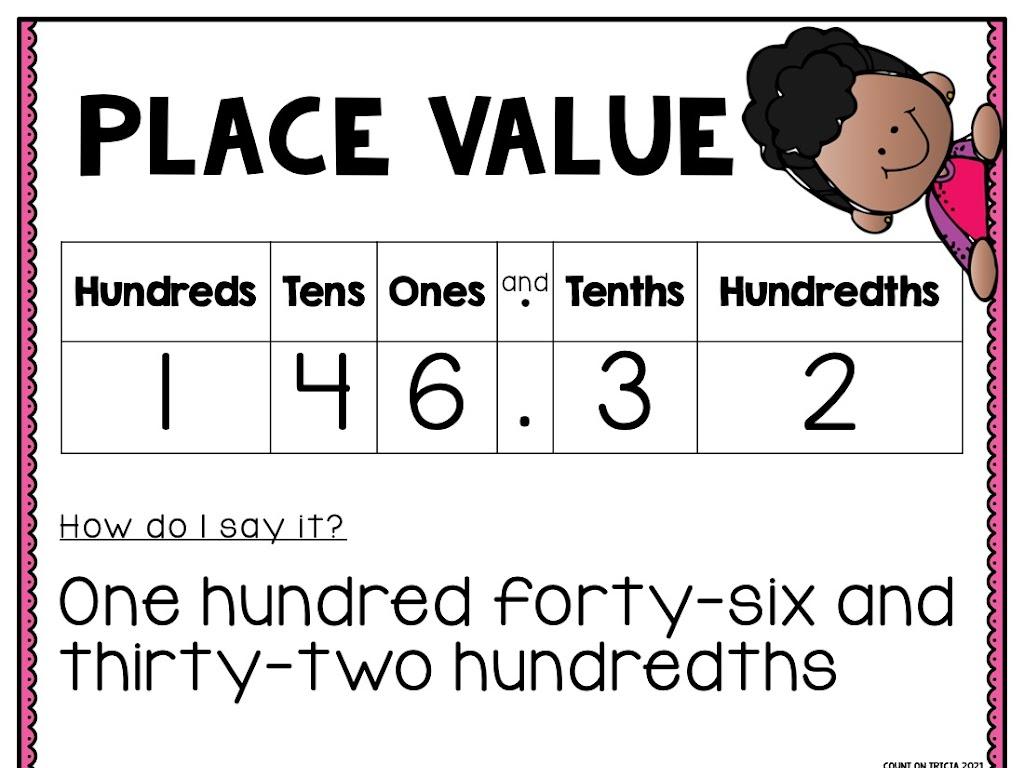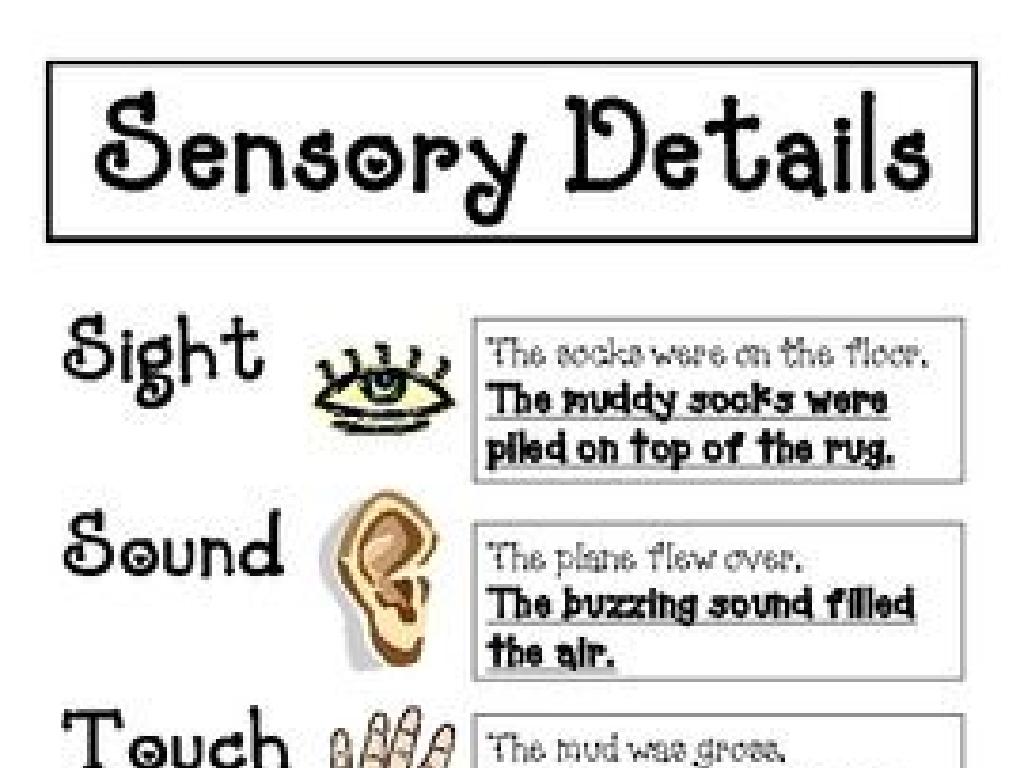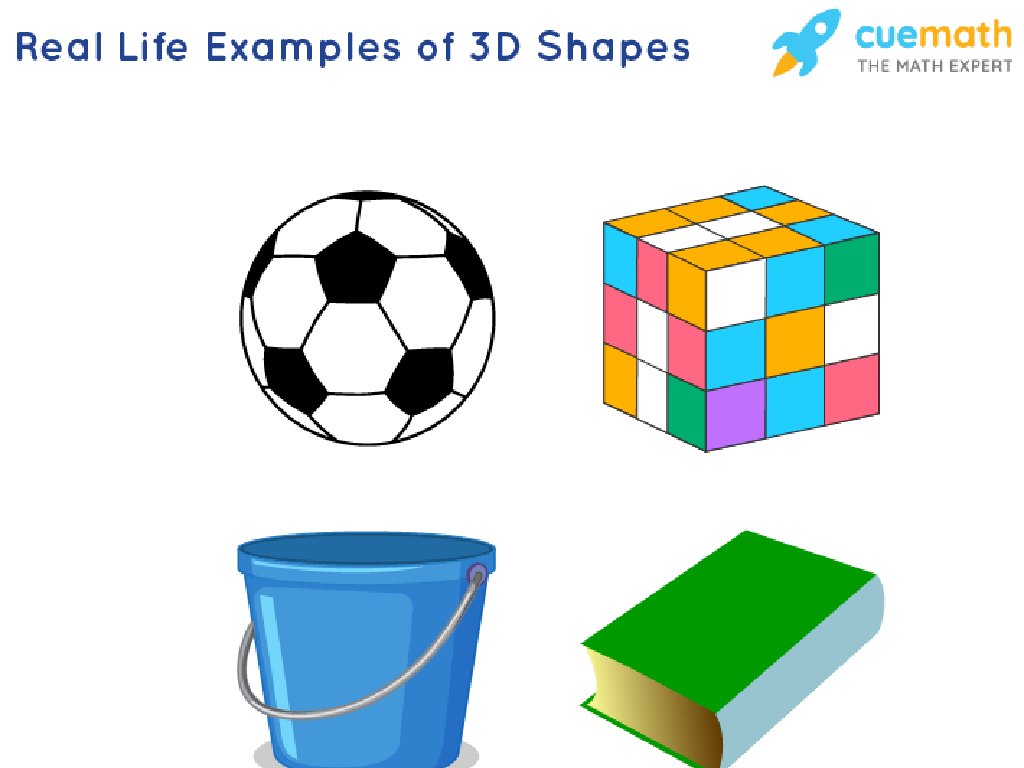Area Of Circles
Subject: Math
Grade: Seventh grade
Topic: Perimeter And Area
Please LOG IN to download the presentation. Access is available to registered users only.
View More Content
Exploring the Area of Circles
– Understanding area and perimeter
– Recap: Perimeter of squares/rectangles
– Perimeter is the distance around a shape
– Today’s focus: Area of circles
– Area is the space inside a shape
– Formula for area of a circle: A=Àr²
– Use À (pi) and radius (r) to calculate
|
Begin with a brief review of what perimeter and area represent, ensuring students recall how to calculate the perimeter of squares and rectangles. Transition to the main topic of the day, which is the area of circles. Introduce the formula for the area of a circle, A=Àr², where A is the area, À (pi) is approximately 3.14, and r is the radius of the circle. Provide examples of circles in real life, such as pizza or a round swimming pool, and demonstrate how to apply the formula by calculating the area with different radius lengths. Encourage students to think of other circular objects and consider their areas. This will help them visualize and better understand the concept of area in a practical context.
Understanding the Area of Circles
– Area: size of a surface
– Like how much paint needed for a wall
– Measured in square units
– Such as square inches, square feet
– Importance of knowing area
– Helps in planning spaces & materials
– Area of circles in real life
– Calculate space for round tables or rugs
|
The concept of area is fundamental in mathematics and is particularly important for practical applications in real life. It is the measure of how much two-dimensional space a surface occupies and is expressed in square units. Understanding area is crucial for tasks such as determining the amount of paint needed for a wall or the carpeting for a room. In the context of circles, knowing how to calculate the area is essential for situations like arranging furniture or landscaping where round objects are involved. Encourage students to think of examples where they might need to know the area of circular objects in their daily lives.
Exploring the Circle: Key Components
– Circle’s key parts: center, radius, diameter
– Radius: center to the edge of the circle
– If the radius is 4 units, the distance from the center to the edge is 4 units
– Diameter: twice the radius
– A diameter of 8 units means the radius is 4 units
– Relationship between diameter and radius
– Diameter is always double the radius, no matter the size of the circle
|
This slide introduces students to the fundamental parts of a circle, which are essential for understanding how to calculate the area of a circle. Emphasize the definitions of the radius and diameter, and ensure students can identify these parts on any circle. Use visuals to help students see the radius as a line from the center to the edge, and the diameter as a line crossing the circle through the center. Reinforce the concept that the diameter is always twice as long as the radius, which is a key relationship they will use in later calculations. Encourage students to measure these in different circles to see the consistent relationship.
Understanding the Area of a Circle
– Area formula: A = Àr²
– The space inside a circle, calculate using radius and Pi
– ‘A’ represents area
– ‘r’ is the circle’s radius
– Half the diameter, the distance from center to edge
– À (Pi) approximates to 3.14
– A constant value used in circle calculations
|
This slide introduces the fundamental formula for calculating the area of a circle, which is an essential concept in geometry. The area is the amount of space inside the boundary of the circle. The formula A = Àr² involves Pi (À), a mathematical constant, and the radius (r), which is the distance from the center of the circle to any point on its edge. Emphasize that ‘A’ stands for the area we are trying to find. It’s important to ensure students understand that the radius is half of the diameter of the circle. Use visual aids to illustrate the concept of radius and Pi. Provide examples of calculating the area with different radius lengths to solidify their understanding. Encourage students to memorize the value of Pi as 3.14 for simplicity in calculations, although they should also be aware that Pi is an irrational number with non-repeating decimals.
Understanding Pi (À)
– Pi (À) is a special mathematical number
– Ratio of circumference to diameter
– For any circle, dividing the circumference by the diameter equals À
– Pi is approximately 3.14
– Use 3.14 for practical calculations, though À has infinite decimals
– Pi is an irrational number
– It cannot be expressed as a simple fraction
|
Pi (À) is a fundamental concept in understanding the area of circles. It is a unique number that represents the ratio of a circle’s circumference to its diameter and is the same for all circles. While we often use 3.14 as an approximation for ease of calculation, it’s important to note that À is actually an infinite, non-repeating decimal, which makes it an irrational number. This means it cannot be perfectly represented by a fraction or a decimal. When teaching this concept, ensure students understand the significance of À in formulas for the circumference and area of a circle and how it is used in practical applications.
Calculating Area of Circles
– Area formula: A = Àr²
– Example 1: radius = 4 inches
– For r = 4, Area = À(4)² = 16À in²
– Example 2: diameter = 10 inches
– For d = 10, r = 5, Area = À(5)² = 25À in²
– Practice with various radii
– Use different values of r to calculate area
|
Introduce the formula for the area of a circle, A = Àr², where r is the radius. Work through Example 1 by plugging in the radius to find the area. For Example 2, first convert the diameter to radius by dividing by 2, then use the formula. Provide students with additional radii to practice calculating the area on their own. Encourage them to memorize the formula and understand each step of the calculation process. This will help them solve problems involving the area of circles confidently.
Real-life Applications of Circle Areas
– Importance of circle area calculation
– Designing round tablecloths
– Calculate fabric size for table settings
– Landscaping circular gardens
– Determine the amount of grass or flowers needed
– Area knowledge in planning
– Helps in efficient use of materials and space
|
Understanding the area of circles is crucial in various real-life situations. For instance, when designing a round tablecloth, knowing the area helps in determining the amount of fabric needed. Similarly, in landscaping a circular garden, calculating the area allows for precise planning of the space, ensuring that the right amount of grass, flowers, or other materials is used. This knowledge is not only practical but also cost-effective, as it helps in avoiding wastage of resources. Encourage students to think of other examples where knowing the area of a circle is beneficial and discuss how this skill can be applied in everyday life.
Class Activity: Exploring Circular Areas
– Measure radius or diameter
– Use rulers to measure objects like clocks, plates, or jar lids
– Calculate area with formula
– Apply the formula: Area = À × radius² or Area = À × (diameter/2)²
– Share findings with class
– Discuss the results and compare with classmates
– Reflect on the activity
|
This interactive class activity is designed to help students apply their knowledge of the area of circles to real-world objects. Provide a variety of circular objects for students to measure. They should use rulers to find either the radius or the diameter. Once they have these measurements, guide them to use the area formula (Area = À × radius² or Area = À × (diameter/2)²) to calculate the area. After calculations, students will share their findings with the class, fostering a collaborative learning environment. Encourage them to reflect on the process and understand the practical application of the mathematical concept. Possible variations of the activity could include grouping students to measure different objects, using string to measure the circumference and then deriving the radius, or even estimating the area first and then measuring to check accuracy.
Homework: Mastering Area of Circles
– Complete area worksheet
– Solve problems on calculating circle areas
– Practice with varied circle sizes
– Use circles of different diameters
– Review your answers thoroughly
– Ensure accuracy in your calculations
– Share your findings next class
|
This homework is designed to reinforce the concept of finding the area of circles, a key skill in geometry. Students should complete the provided worksheet, which includes problems of varying difficulty. Encourage them to practice with circles of different sizes to understand how diameter affects the area. They should review their answers to ensure they are comfortable with the calculations. In the next class, students will have the opportunity to discuss their answers and methods, fostering a collaborative learning environment. Provide guidance on using the formula for the area of a circle (A = Àr^2), and remind them to check their work for accuracy.
Area of Circles: Recap and Importance
– Area formula: A = Àr²
– Pi (À) is crucial in the formula
– Pi (À) approx. 3.14, links radius to area
– Real-life application of area
– Used in planning spaces, art, and construction
|
As we conclude, remember that the area of a circle is found using the formula A = Àr², where ‘A’ represents the area, ‘À’ is Pi, approximately 3.14, and ‘r’ is the radius of the circle. Pi is a fundamental constant in mathematics that relates the diameter of a circle to its circumference and is essential in calculating the area. Understanding how to compute the area of circles is not just a mathematical skill but also a practical tool in real life. It’s used in various fields such as architecture, engineering, and even in everyday tasks like determining the size of a round tablecloth or the amount of paint needed for a circular area. Encourage students to think of other areas where knowing how to calculate the area of a circle might be useful.






